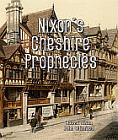
Stonehenge Today & Yesterday

Description
Today & Yesterday
By Frank Stevens
The interest that has always attached itself to Stonehenge has, without doubt, been in a great measure due to the mystery as to the origin of this unique monument of bygone time. Excerpt: HiddenMysteries
But the careful investigations carried out by the modern school of archæologists, as instanced in the work of General Pitt Rivers, Mr. Gowland, and others, every excavation being carried out with great care and scientific accuracy, have had good results; little by little the history of Stonehenge has been unravelled; a fact that Mr. Stevens has clearly demonstrated in the present volume. We now know how, when, and who, built this remarkable temple. One point, however, still remains a mystery, viz. whence the so-called foreign stones were obtained? Clearly, as geology shows, from no spot in Wiltshire.
 Amongst the many rude stone circles scattered over Great Britain, Stonehenge is unique, in the fact of having its sarsen stones carefully though roughly worked; and also in the introduction of the horseshoe within the circles, in the design or plan of the building. As in the present day, our churches, in their design, symbolise the Cross, so we may fairly infer that the horseshoe at Stonehenge had its own special meaning, as it still has in the East.
Amongst the many rude stone circles scattered over Great Britain, Stonehenge is unique, in the fact of having its sarsen stones carefully though roughly worked; and also in the introduction of the horseshoe within the circles, in the design or plan of the building. As in the present day, our churches, in their design, symbolise the Cross, so we may fairly infer that the horseshoe at Stonehenge had its own special meaning, as it still has in the East.
There is not a county in England which does not pride itself upon some outstanding characteristic which places it in a category by itself. And if there be a thing particularly characteristic of Wiltshire, it is "the Plain" of which John Evelyn above quoted has written so kindly.
The word Plain is somewhat misleading, for the surface of the Salisbury Downland is anything but even, as poor Samuel Pepys found to his cost when he traversed it in 1668, and on his journey encountered some "great hills, even to fright us." The actual truth lies midway between the "evenness" of Evelyn and the "great hills" of Pepys, and to the man of Wilts that word "Plain" will ever summon up a vision of rolling downs, a short, crisp, elastic turf dotted with flocks, and broken here and there by some crested earthwork or barrow, which rears itself from the undulating Down, and breaks the skyline with its sharp outline. It has been estimated that fully one-half of Wiltshire consists of these high bare chalk downs which rise in bold rounded bluffs from the valleys which thread their way through the county. It is impossible to escape them. The Cotswold shepherd looks downward on their folds, and marks the gleaming white of the occasional chalk pit which breaks the surface of their scarp.
Softcover, 5" x 8", 90+ pages













